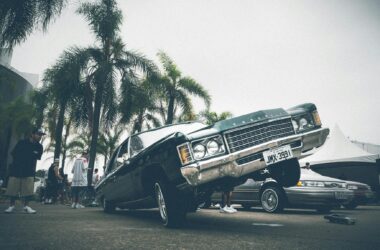The debate between muscle cars and modern cars is one that continues to divide car enthusiasts. While both types of vehicles offer impressive performance, they represent two distinct eras of automotive engineering, each with its own philosophy, aesthetic, and appeal. Muscle cars, which dominated the streets from the 1960s to the 1970s, are known for their raw power, aggressive styling, and simplicity. On the other hand, modern cars, built with cutting-edge technology and innovative features, focus on efficiency, precision, and advanced driving experiences. Let’s dive deeper into this clash of automotive titans.
Muscle cars originated in the United States during the 1960s, capturing the imagination of speed enthusiasts with their large, high-displacement V8 engines, rear-wheel drive, and imposing, aggressive designs. Legendary models like the Ford Mustang, Chevrolet Camaro, Dodge Charger, and Pontiac GTO are synonymous with American muscle cars, evoking an era of rebellious spirit, unbridled power, and freedom on the open road.
One of the key characteristics of muscle cars is their raw horsepower. These vehicles were designed to offer straight-line acceleration, with their massive engines churning out an impressive amount of torque. Muscle cars were relatively affordable compared to European sports cars, making them accessible to the average consumer. Their simplicity was part of their charm—stripped-down interiors, manual transmissions, and a focus on performance over luxury meant they were built for drivers who wanted power and speed above all else.
However, muscle cars weren’t without their flaws. Their emphasis on power often came at the expense of handling and fuel efficiency. Muscle cars were notorious for their heavy bodies and lack of advanced suspension systems, which made them challenging to control at high speeds and in sharp corners. Additionally, fuel consumption was high, a factor that became increasingly important during the oil crises of the 1970s, which ultimately led to the decline of the muscle car era.
Modern Cars: The Age of Precision and Technology
Modern cars, by contrast, embody the advancements in automotive technology over the past few decades. Today’s cars are designed with a balance of power, precision, safety, and efficiency. Turbocharged and hybrid engines, along with electric powertrains, have become more common, allowing modern vehicles to achieve performance levels that rival (and often exceed) those of classic muscle cars, all while being far more fuel-efficient and eco-friendly.
In terms of design, modern cars are sleeker and more aerodynamic, prioritizing wind resistance and overall efficiency. Models like the Tesla Model S, BMW M3, and Chevrolet Corvette C8 showcase how modern engineering focuses on both speed and control. These cars come equipped with advanced electronics, including adaptive suspension systems, launch control, and driver-assist features that make driving faster and safer.
While muscle cars were celebrated for their mechanical simplicity, modern cars leverage cutting-edge technologies like digital displays, infotainment systems, and autonomous driving aids. Safety features such as anti-lock braking systems (ABS), traction control, and multiple airbags are now standard in almost every car, making modern vehicles far safer than their muscle car predecessors.
Performance: Muscle vs. Modern
When it comes to performance, the debate between muscle cars and modern cars boils down to power versus precision. Muscle cars were all about straight-line speed, with massive V8 engines delivering raw, brutal acceleration. Modern cars, however, are more focused on all-around performance, excelling not only in speed but also in handling, braking, and efficiency.
Take, for example, a classic 1969 Dodge Charger versus a 2020 Chevrolet Corvette. The Charger, with its iconic V8 engine, would undoubtedly deliver exhilarating power in a drag race, but its handling and braking capabilities would pale in comparison to the Corvette. The modern Corvette offers a refined driving experience, with precise steering, advanced aerodynamics, and stability controls, making it much more versatile on twisty roads and race tracks.
Aesthetic and Cultural Impact
Muscle cars embody a sense of nostalgia, evoking the golden era of American automotive culture. Their aggressive stance, roaring engines, and bold, unapologetic designs symbolize a time when cars were a statement of individual freedom and rebellion. Shows like Knight Rider and movies like Bullitt made muscle cars icons of pop culture, embedding them deeply in the American psyche.
Modern cars, meanwhile, reflect a forward-thinking approach, blending performance with efficiency, safety, and technology. The sleek, minimalist designs of brands like Tesla speak to a generation focused on sustainability, innovation, and technological advancement. These cars have become symbols of luxury and status in the modern age, appealing to drivers who value not just speed but also cutting-edge features.
Conclusion: Which Is Better?
Ultimately, the choice between muscle cars and modern cars depends on what a driver values most. Muscle cars represent a bygone era of brute force and simplicity, attracting purists who crave a visceral, unfiltered driving experience. Modern cars, with their technological advancements and all-around performance capabilities, cater to drivers seeking speed, safety, and sophistication in one package.
Whether you’re drawn to the rumble of a classic V8 or the futuristic precision of an electric supercar, both muscle cars and modern cars hold a unique place in automotive history—and both continue to captivate car enthusiasts around the world.









